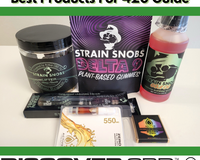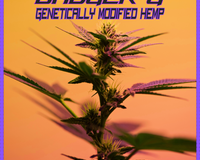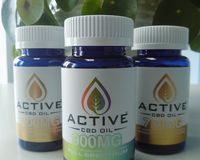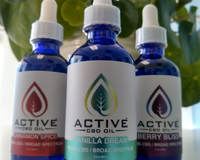Finding out that you have scoliosis can be scary. After dealing with intense lower back pain for almost a year, my doctor finally did an x-ray and I was diagnosed with scoliosis. My initial reaction was fear, followed by anger. I was angry with my body for betraying me at such a young age and at my doctor for telling me there wasn’t anything that could be done. Sometimes I wish that I could go back and tell my younger self that just because there isn’t a “fix” or a “cure” doesn’t mean that I have to live in constant pain.

What is Scoliosis?
A healthy spine has three naturally occurring curves. The American Association of Neurological Surgeons, AANS, defines scoliosis as an abnormal lateral curvature of the spine. Six to nine million people in the United States are affected by scoliosis, and most experience the onset of scoliosis around 10 to 15 years of age. Hippocrates (460-370 BC) and Galen of Pergamon (130-200 AD) are responsible for many of the first discoveries about the spine and scoliosis. Both had many works that included some of the earliest medical information about spinal deformities.
Causes
Scoliosis can be categorized in one of three ways: idiopathic, neuromuscular, or congenital. A majority of cases, about 80 percent, are considered to be idiopathic, meaning that a person’s scoliosis is not associated with any underlying causes. Neuromuscular scoliosis is typically associated with diseases that are neurological or muscular such as muscular dystrophy, spinal muscular atrophy, spina bifida, and cerebral palsy. Trauma to the spinal cord can also cause neuromuscular scoliosis. The third category is congenital and usually forms during early pregnancy. It can be caused by vertebrae growing at different paces or not fully forming, causing the rest of the spine to grow abnormally.
Scoliosis can occur with or without a lot of symptoms. Healthline states that a person having an abnormal curve in their spine can be indicated by abnormal posture, uneven hips or shoulder blades, a person’s head not being centered on their body, or a spine that is visibly not straight. Pain caused by scoliosis can come from pressure being applied to spinal discs or facet joints, as well as nerves being irritated or strained, or even inflamed joints. Lower back pain, stiffness, and fatigue can be caused by scoliosis. If a person with idiopathic scoliosis reports having more than mild back discomfort, the AANS suggests being evaluated to check for another cause of the pain.

Treatment
Pain Management
As I mentioned above, there isn’t really a “fix” or a “cure” for scoliosis. Exercise, painkillers, and spinal injections can be used to help manage pain. Keeping your back moving and strengthening it with exercise can help some people in alleviating pain. Over-the-counter painkillers are widely available and affordable, making them a more accessible option for many. Spinal injections can be given to reduce pain, numbness, or tingling sensations associated with irritated nerves, but typically only last a few weeks or months.
Observation
Bracing
Surgery
My Experience with Scoliosis

A Rough Beginning
When I was first diagnosed with scoliosis, I was in massive amounts of pain. Being in the retail industry, I was on my feet for 9 to 10 hours a day on average and moving heavy boxes of product between back rooms and sales floors. Pushing myself to do more and not take breaks really wore on my back and left me in tears more times than I could count. Standing would often cause a sharp pain in my back and laying down never really felt like rest because of the stiffness in my back I couldn’t shake. My doctor ended up prescribing me gabapentin, but the minimal relief I felt with the medication felt overshadowed by the frustrating side effects. Some side effects I was encountering from the medication included difficulty remembering things, constant brain fog, and a lack of concentration. I would often skip the medication because the side effects just felt like too much for me.
Managing My Pain
It’s been a few years now, but I finally feel like I have a grasp on what helps the pain I experience from scoliosis. A good combination of CBD, yoga, and setting physical limitations for myself has changed my life.
Discovering CBD
CBD topicals were the first miracle I encountered. The pain I usually experience is very localized in one section of my back, which made a topical seem like a good place for me to start. Personally I can feel the difference within minutes as the pain changes from a sharp, stabbing feeling to almost nothing, maybe a dull ache on a bad day. It made work and day-to-day activities more enjoyable for me! My favorite part of a topical is that I am able to reapply it as needed instead of having to wait a certain amount of time to take another dose of something. My current topical of choice is the Active CBD Oil Full Spectrum Salve, as I find that the natural ingredients used in the salve don’t bother my skin in the ways some lotions or roll-ons can.
I’ve recently started taking our Active CBD Oil Full Spectrum Tincture as well, as I’ve heard other people mention that if they use their tincture once in the morning and again in the evening that they have less pain flare ups throughout the day. While I can say that I haven’t experienced as many flare ups during the day, I look forward to using it over a longer period of time to really see the full potential benefits.

Stretching with Yoga
I also mentioned that I find some relief from yoga. I find that applying a topical before starting really helps me get more into what I’m doing, as I’m able to more freely move around if I’m feeling less pain. A lot of the poses I find relief with focus on the lower back, which is where the lateral curvature in my back lies. My top three poses are the child’s pose, the cat-cow, and the standing forward fold. I’ve found that if I do these poses some time before bed that I’m able to lay down without feeling stiff as a board and I can actually relax. Yoga helps me in the way that it releases tension and stiffness, but some people do yoga to help their scoliosis in the way of strengthening their core muscles to better support their spine. People with scoliosis should consult with their doctor before starting a yoga routine, as some poses can actually cause scoliosis to worsen.
Knowing Your Limits
Of all of the things that have helped me I think that the best thing I did for myself was learn to set limitations. Taking the time to listen to my body and know when I’m pushing myself too hard helped me figure out how to set better limits. If I’m standing for long periods of time I tend to take breaks to sit down, and if I’m sitting at a desk all day I make a point to get up and stretch so the stiffness doesn’t set in. I ask for help if there’s something I can’t carry by myself, and I say no when I’m asked to do things that would cause me pain later down the line. Asking for help or accommodations is something that I struggled with for a long time because I was afraid of being seen as weak. I’ve since learned that being able to ask for help when I need it actually helps me do my job better and makes my life so much easier. The less pain I’m in, the more I can focus on this lovely little experience that is life.

Enjoying Life Again
A scoliosis diagnosis can be scary, but it doesn’t mean you have to live in constant pain. Finding ways to manage your pain can make life enjoyable again. I hope that my experiences give you some ideas on how to manage your own pain. As we mentioned in a blog posted earlier this year, everyone’s endocannabinoid system processes CBD a little differently. It may take some trial and error to find a method that works for you, but please reach out to us here at Discover CBD if there’s anything we can help you with! You can stop by, give us a call, or even chat with us online.

























